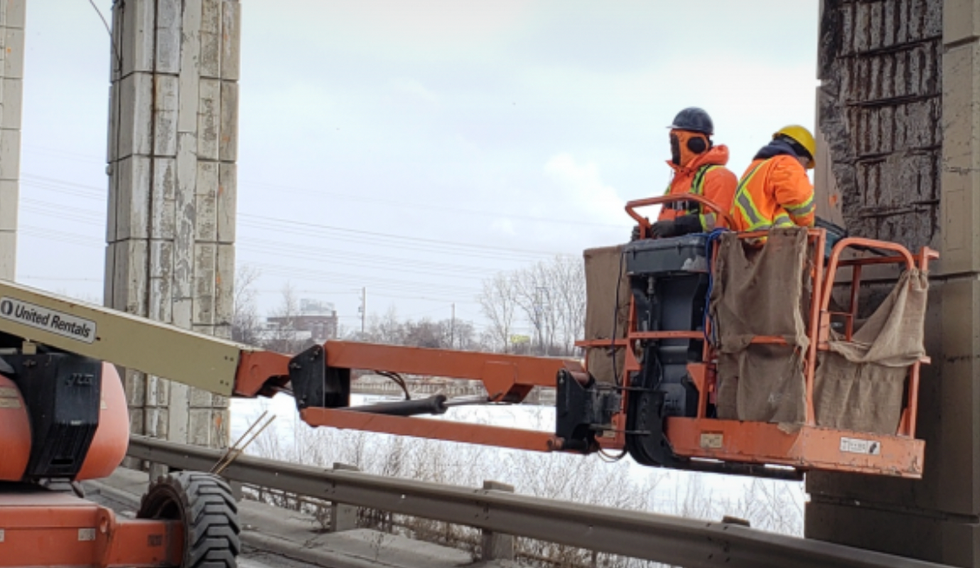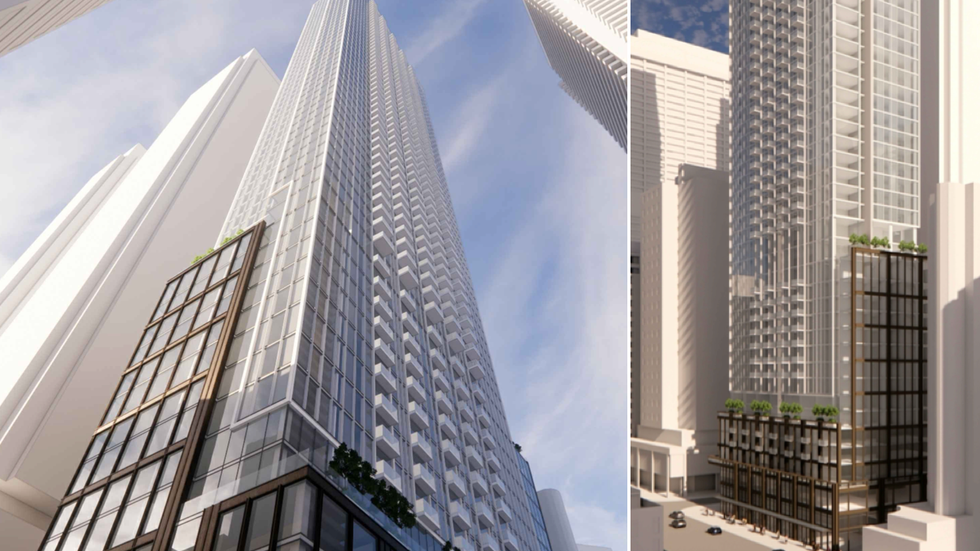For 60 years, the Gardiner Expressway has provided one of the most convenient routes for residents and visitors heading to the heart of downtown and beyond. But in recent times, inane levels of traffic, largely exacerbated by the Gardiner Rehabilitation, have led to congestion so bad that it only took two months from the time that work began on the 700-metre stretch between Dufferin Street and Strachan Avenue for Toronto city councillors to call for an expedited construction timeline.
At Wednesday's City Council meeting, councillors considered a report from city transportation staff presenting information on doing just that: getting the projected three-year Gardiner Rehabilitation Section 2 contract down to two years — so, phew?
The report found that measures to accelerate construction could include adding additional crews and equipment, extending construction hours, taking measures to allow work during the winter, and accelerating prefabrication of elements needed to install the new bridge segments.
And yes, the goal is to complete construction before the city hosts the FIFA World Cup by wrapping up work on April 15, 2026, well before the June 11 kickoff.
So, while in a slightly better position than before, drivers will still be grappling with insufferable rush hour gridlock brought on by Gardiner repairs until April 2026. Not to mention the nearby residents who will endure construction noise long before and after rush hour.

This phase of the Gardiner Revitalization entails the loss of two lanes at a time, leaving two lanes open for traffic in each direction, until the entire 700-metre stretch has been revitalised. It also involves modifying 35 vertical piers supporting the elevated highway.
Of course, the fact of the matter is that the Gardiner does need to be repaired. The main arterial highway has been in service since the ‘60s and as the staff report says, “is approaching the end of its original design life.”
We’ve all driven under the Gardiner. It looks like the set of a post-apocalyptic movie in some parts.
But as was also noted in the city transportation staff report, traffic and congestion costs the City — like a lot. According to the Toronto Region Board of Trade, Toronto loses a staggering $11B to traffic annually. Hence why the provincial government has announced it will be funnelling $73M to the City of Toronto on the condition that construction be allowed to proceed up to a 24/7 basis, among other expediting measures. The province's involvement in the Gardiner project has been made possible thanks to a historic "new deal" struck between Toronto Mayor Olivia Chow and Premier Doug Ford at the end of last year, which included up to $1.2B in provincial operating supports over three years and uploaded the Gardiner Expressway and Don Valley Parkway to the province, subject to third-party due diligence.
At Wednesday's Council meeting, Councillor Brad Bradford called the $73M a "bailout," after stressing that these expediting measures, including 24/7 construction, probably should have been implemented from the get-go. "Anyone who has done a home renovation knows that when you [...] change the project significantly midstream, that comes at a cost," he said. "Because of mismanagement on the front end[...] taxpayers are going to have to pay a lot more for it" — and wait longer for it.
In a press release from the Ontario Government, it was projected that an accelerated timeline will save the city $273M “by getting drivers and goods out of gridlock a year faster than planned.”
“Our government is helping get the 140,000 drivers from Toronto, Peel, Halton, York, Hamilton and across Ontario who use the Gardiner Expressway each day out of gridlock and where they need to go faster,” said Ontario’s Minister of Transportation Prabmeet Sarkaria in the release. “The practical solutions we are implementing to speed up construction, like 24/7 work, will provide major economic benefits to Ontario and make life easier and more convenient for drivers from across the province, and in the local community.”
- More Toronto Traffic Woes: Spadina Streetcars Will Be Replaced By Buses For Months ›
- More Than Half Of GTHA Residents Considering Moving Due To Excessive Traffic ›
- Toronto City Council Approves Motion To Speed Up Gardiner Expressway Construction ›
- Toronto's First Mass Timber Development On City Land Gets Final Approval ›





















